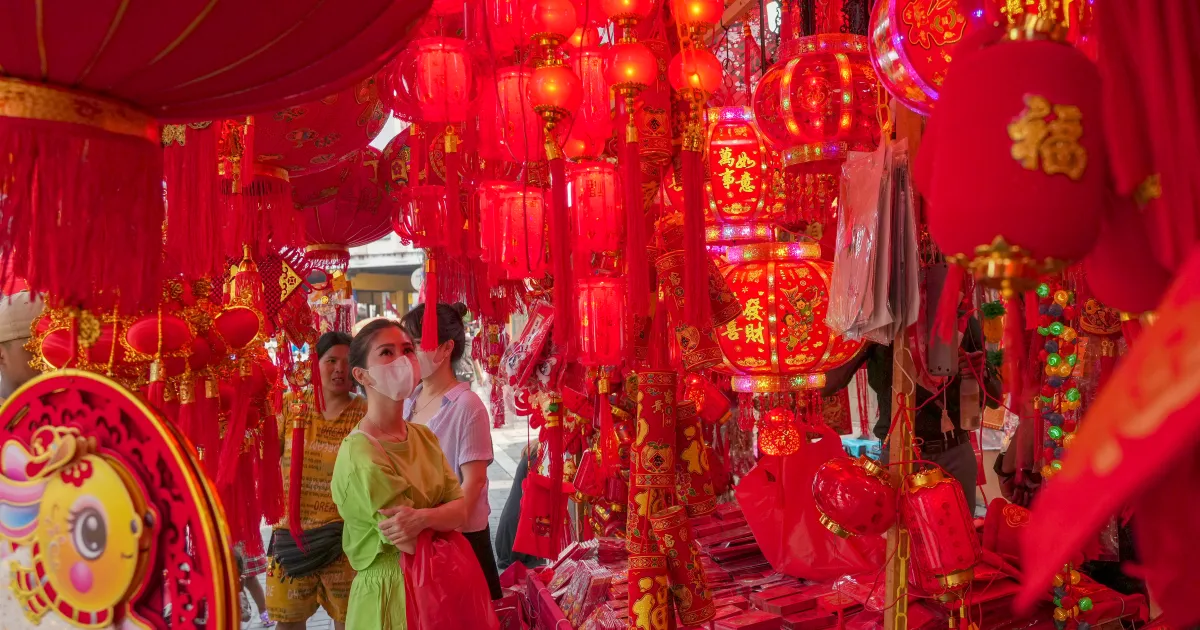
Lunar New Year is a significant cultural event in various countries, primarily in Asia. This festival marks the beginning of a new year based on lunar or lunisolar calendars. Which differs from the Gregorian calendar commonly used in the West.
This blog will find out the countries celebrating the Lunar New Year. And the reasons behind these celebrations, their connections, and other notable New Year celebrations worldwide.
- China: The most widely celebration is the Chinese New Year or Spring Festival, which features family reunions, feasting, and various cultural activities.
- Vietnam: Celebrated as Tết Nguyên Đán, this festival includes family gatherings, special foods, and honouring ancestors.
- South Korea: Known as Seollal, it involves traditional games, food, and rituals to honour ancestors.
- Mongolia: Tsagaan Sar, or White Moon, will celebrate with family gatherings and traditional foods.
- Singapore: The celebration mirrors that of China, with public festivities and family reunions.
- Malaysia: Chinese New Year is widely happening among the Chinese community, featuring similar customs to those in China.
- Indonesia: The Chinese community celebrates with various cultural events and family gatherings.
- Philippines: Known as Chinese New Year, the Filipino-Chinese community celebrates with various traditions.
- Thailand: The celebration is observed mainly by the Chinese community, with parades and family gatherings.
- Brunei: Celebrated by the Chinese population with family reunions and cultural festivities.

Reasons for Celebration
The Lunar New Year is deeply rooted in cultural and historical significance.
- Cultural Heritage: The festival honours traditions and cultural heritage passed down through generations.
- Family Reunion: It emphasizes family togetherness, with many people travelling long distances to reunite with loved ones.
- Spring Festival: The celebration marks the arrival of spring, symbolizing renewal and new beginnings, which is particularly significant in agricultural societies.
- Rituals and Customs: Each culture has its unique rituals, such as cleaning homes to sweep away bad luck, preparing special foods, and performing ancestral worship.

Connections Between Celebrations
While the Lunar New Year is various in some countries, the underlying themes of family, and renewal. And cultural heritage creates a common thread among these celebrations. Many customs, family dinners and the use of specific symbols for good luck. They share cultures, reflecting a collective appreciation for the new year and its potential for prosperity and happiness.
New Year Celebrations Not Based
In addition to the Lunar New Year and the Gregorian New Year, several other New Year celebrations occur worldwide that are neither lunar nor Gregorian:
- Nowruz: The Persian New Year, celebrated on the vernal equinox (around March 20 or 21), marks the arrival of spring and is observed in various countries, including Iran and parts of Central Asia.
- Rosh Hashanah: The Jewish New Year, which typically falls in September or October, marks the beginning of the High Holy Days in Judaism.
- Diwali: While not an official New Year, this Hindu festival of lights is a new beginning in some regions, usually occurring between mid-October and mid-November.
- Islamic New Year: Also famous for Hijri New Year, this marks the beginning of the Islamic lunar calendar year and varies each year based on lunar cycles.
- Enkutatash: The Ethiopian New Year, celebrated on September 11 (or 12 in a leap year), marks the end of the rainy season and the beginning of a new year in the Ethiopian calendar.

The Lunar New Year is a vibrant celebration transcending borders, uniting various cultures through values of family, tradition, and renewal. As we explore the diverse ways in which different countries celebrate this occasion. We gain a deeper appreciation for the rich global cultures and unique approaches to marking the passage of time.
Read more on Lifetips.blog














